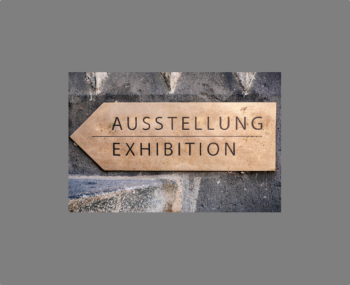No matter how many trade shows a company has attended domestically, going overseas with a custom trade show exhibit is an entirely different experience that comes with a unique set of challenges. When exhibiting internationally, attendee experience and expectations, as well as cultural norms, are all different than those in the United States. As a result, an exhibitor can anticipate some unexpected hurdles from country to country.
Here are four ways to improve the international experience for clients and staff alike to yield maximum results.
Get to Know the Audience
It is no secret that the focus in every industry today has shifted toward the client: catching their interest, providing them with a positive experience, and anticipating their response.
When developing a creative plan for a trade show, it is important to identify the target audience and the unique qualities that make them the perfect prospective client. This starts with research and careful planning to understand their decision-making process and their stakeholders who can impact that results.
In order to effectively draw in targeted attendees, companies must demonstrate knowledge and understanding of their wants and needs – which means taking the time to research business norms and expectations is critical in order to make an impact at an international show.
Design and marketing strategies work best when they are geared toward a specific audience, and the variety of cultural factors that influence their business approach. Meeting clients with an understanding of their needs and how your products address those needs makes a well-planned custom exhibit design all the more powerful and important.
Make Cross-Cultural Connections
Understanding cultural contexts can make a huge impact on attendees’ trade show experience. Whether making personal or professional connections, knowing about a person’s culture is fundamental to the conversation.
Connect with attendees on a personal level by demonstrating genuine respect for the local culture. These connections are not always made verbally, either; learning more about the country’s economy and even the venue itself can help the team develop a greater respect for cross-cultural similarities and differences.
Booth staff who are respectful of cultural similarities and differences can be the key to standing out at a busy trade show. Customizing the trade show experience can help create memorable experiences for clients, especially in comparison to competitive American counterparts.
Plus, demonstrating cultural awareness and understanding makes a great first impression and sets the stage for a genuine interpersonal connection. Attendees’ experience should reflect the show’s location and the various cultures that will be represented in order to maximize engagement and, ultimately, results.
Overcome Language Barriers
It is so important not only to learn about people from different backgrounds, cultures and communication styles, but also to overcome language barriers. There are certain limitations to being monolingual, but that does not have to be an impediment on quality relationships.
The first step in communicating internationally is to not expect others to speak English. As more brands go global, cultures and languages are intermingling in professional settings, which makes multilingual experiences more pressing.
Consider hiring multilingual booth staff or native translation services for marketing materials. A quick and effective way to communicate services or products at a trade show might hinge on the ability to provide vetted translations for common keywords in the various languages that are represented.
Additionally, companies who hire a translator or staff bilingual team members can leverage their language skills for guidance on common cultural traditions and local business customs and expectations.
Plan Your Exhibit Accordingly
When it comes to planning the next international exhibit, include cultural and linguistic sensitivities into the design and marketing plan from the beginning. Determine the host location, language and general information about business culture as well. The more cultural awareness incorporated into a program, the more booth staff will be able to confidently provide quality attendee interactions.
Additionally, be sure to research the differences in booth expectations by country. For instance, carpet with padding is commonly used for flooring in the Unites States, however raised flooring is the norm in Germany. In Asia, there is more of a “build and burn” mentality on constructing booths on the show floor, as opposed to purchased, rental or hybrid exhibits domestically. Understanding the nuances of the overall exhibiting process in different countries will help smooth out expectations for you and your target visitors.
At Exhibitus, we design high-quality, custom trade show exhibits to support trade show and event professionals, both domestically and internationally. Exhibitus works with companies and clients to develop a design and marketing implementation plan unique to your brand and goals. Collaborate with us from the start and develop a proactive plan for each unique location.

